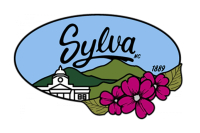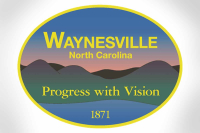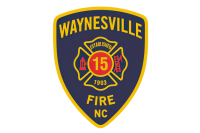All things wild and wonderful
By Karen Dill
It is in April that the wild things emerge. Bears crawl from their dens; baby wolves are born while their parents howl at the moon; and mysteriously tender green shoots climb bravely from the ground. To an unsuspecting eye, the tiny foliage may resemble weeds but to my mountain-bred father, they were supper. And nothing seemed to taste better than a mess of those wild greens cooked up over a wood stove on a chilly April evening. It was a connection with the earth, the soil, and their dark secrets.
My father loved nothing more than to head into the woods on a clear April morning and return with all matter of strange wild plants. For it was in the dark hollows and beside streams that flowed from the mountain ridges, he found a secret cache of edible plants that had no doubt sustained his family through the years of his poverty stricken childhood. He always went alone and remained as secretive about the location of his wild plant beds as a fisherman is about his favorite fishing hole.
On these treks, my father carried an old burlap sack (called it his poke) thrown over his shoulder and returned with his surreptitious collection of ramps, creasy greens, fiddlehead ferns, poke salat, dock, and other greens lacking any name. When the sack was open, out came a treasure trove. A few strange mushrooms emerged looking for world like spaceship aliens. I kept a wide berth from them, but my father ate them with relish and never suffered even a hint of indigestion.
The first prize from the poke to be cooked was the ramps. Those innocent little onions, so delicious to eat raw, turned mean the next day when your breath resembles a dragon’s after a binge of cigarettes and cheap beer. “Never,” my mother said over and over again, “eat those nasty things ‘til they’ve been cooked!”
And were they cooked! Ramps were baked in meatloaf, scrambled in eggs with bacon, fried with potatoes (my favorite), and boiled up with cabbage. These were the only methods of preparation that I was allowed to sample until one Sunday afternoon in April I bravely bit into one in an effort to impress father.
Related Items
A stranger came by our house that afternoon to purchase some ramps (and a jar from the back of my father’s panel truck). My father warned him to go easy on both purchases as they could cause a man some problems the next day. The stranger questioned this advice.
“Well,” my father explained, “only ‘real mountaineers’ can eat ramps raw and you’d sure better cook yours.”
That’s was all I needed to hear, young as I was (age, 8) I knew the supreme compliment from my father was to be a real mountain person — one who could eat ramps raw. So I snatched up a ramp, then four more, and chewed and swallowed them like an old timer. My father and the stranger were duly impressed.
My mother, however, was not impressed. Despite brushing my teeth five times with baking soda and chewing of horehound candy (kept in the back of the cupboard for sore throats), the smell of the devious little ramps reigned. In my 8-year-old world of magical thinking, I imagined that no one would notice. In the real world of mountain life and experience, my mother knew better and told me to stay home from school. My father just grunted in disdain at that idea and wanting to be the tough little mountain girl, I headed down the dirt road for the school bus.
Second grade was easy for me. I could read, write and “do my numbers” and I fit in fairly well with my fellow mountain classmates but I was not prepared for what would happen over the course of that Monday. I was immediately ratted out by one of the Inman kids in my class. “She stinks,” it was announced to the class and Mrs. Hunter promptly took one whiff and sent me to the corner of the room to complete whatever schoolwork second grader’s needed to complete. I didn’t mind working alone during class, but I hated being sent to the “ramp table” at lunch time.
The ramp table at Bethel Elementary School was legendary. It was an ordinary long lunch table, but it was there that children who had eaten ramps sat during lunch to keep the non-ramp eaters from losing their lunch.
As my classmates giggled from across the lunchroom, I surveyed my new ramp-in-common friends. Among them was Billy Crowe, was a shy quiet Cherokee boy. I had seen their small frame house by the river and wondered how his whole family could fit in that tiny shack.
So on that warm April day at the ramp table, Billy and I were pariahs, outcasts, as were the other inmates at the ramp table. We might be segregated from our other classmates but we were still hungry. Between eager forkfuls of chicken pot pie, we began to smile at each other, taking some comfort in being together — if smelly.
At afternoon recess, Billy and I drew designs in the dirt with small grubby fingers. I ask Billy how many of them lived in that house by the river. He asked me what I had done to get angry red belt stripes down my legs. We talked in 8-year-old fashion about daddies who went crazy every once in a while. We probably found out more about each other in ramp-breath whispers on a dirt playground than any teacher or social worker had or would ever learn about us.
Years later and after my memories of ramps, wild greens from a poke and a small Cherokee boy had long since faded into that place where childhood memories go, I had returned from living abroad and had begun a new teaching job in the Cherokee school system. And it was on my first day of school in the fall of 1987, that I ran into another school employee, Eddie Crowe.
Eddie, it turned out, was Billy’s older brother, and he remembered me from the Bethel ramp table. It is a small world, after all, and we quickly caught up on our lives since elementary school. Most of the Crowe family had moved back to Cherokee but in the 1970s, Billy had been killed in a car accident while riding his bicycle less than a mile from Bethel Elementary School.
Eddie became a renewed friend at my new school and over the years, we talked of Bethel, Billy, ramps, and all things wild and wonderful. He brought me a mess of ramps almost every spring until he married one of our mutual teacher friends and took another job. I loved cooking the ramps along with other native greens each April and I thought of Billy, his wild fear, and the April ramp table with each bite.
This April, the ramps for a wild green dinner will be provided by Mickie and Peewee Crowe, cousins of Eddie and Billy. Sochan, called green-headed coneflower by non-Indians, is a popular dish here in Cherokee in the spring and will be delivered by my friends, Fern and Soup Saunooke. These wild greens are hard to come by these days unless, like my father, you know their secret hiding places or, in my case now, you know the right people. I try to score these precious greens each spring and this year will try them out in some new dishes.
I will use the sochan mixed with some goat cheese, fresh dill, parsley, green onions and leeks for the main dish — a delicious strudel. The strudel uses phyllo leaves which I can easily find at any grocery store in the mountains now. I have found an interesting Madeira-mushroom sauce recipe from a vegetarian magazine that I think will make a good partner with the strudel. The recipe calls for shiitake mushrooms, but in case I have trouble finding these, I will use wild local mushrooms (bought at Earth Fare grocery store as I don’t trust those alien shapes from local totes anymore). The sauce will be pooled on each plate. The individual slices of wild green strudel will be placed in the center of each pool and sauce will be drizzled artfully over the top.
The ramps will be used in a couple of dishes for the wild green dinner. First, I’ll grill some over charcoal to use in a grilled ramp soup. This is a simple dish using chicken broth and heavy cream. The others will be used in a traditional ramp ‘n’ tater dish and some buttermilk biscuits. I will resist the urge to sample the little devils raw.
Branch lettuce, also called wild lettuce, can be found in early April along creek banks. We ate it raw when my father brought it home in his poke — washed well, tossed with some green onions and wilted with bacon grease. I’d rather skip the bacon grease this year for health reasons but will dress the torn lettuce leaves with fresh spring herb vinaigrette. If I can locate some young fiddleheads (they’ll need to be blanched first and then grilled) or dandelion greens, I’ll throw them in the mix.
Wild spring greens beg to be served with cornbread but I’ve found a recipe for ramp biscuits in a recent issue of Bon Appetite that I’ve been dying to try. Southern cooks have no problem with two breads at the table so cornbread and biscuits it is!
For dessert, I will prepare a basic carrot cake. Carrots are a trustworthy spring crop and there should be plenty of the babies for a fresh cake. My friend and co-worker, a speech pathologist and bee keeper, Devlin, has promised some of his local honey to be used as a substitute for sugar in the cake so it will be in keeping with the natural goodness of this wild and wonderful meal.
The meal will be cooked at my house in Webster and taken to Cherokee, warmed up in the school oven, and served to the friends who have contributed the gifts of wild ramps and greens. If the evening is nice, we’ll haul the food to a picnic table on the island across from the school in the Oconafultee River.
As we sit by the river, eating our ramps and wild greens, I’ll remember the wild and wonderful dishes in the spring times of my childhood. I’ll remember a small shack by another river in Bethel where a shy Cherokee boy lived and died. I’ll remember the ramp table and the connection that I felt with my Cherokee friends. I’ll remember that sometimes in our lives, we travel full circle.






